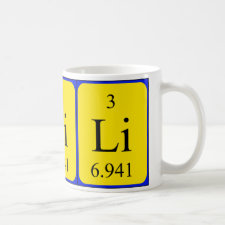
Authors: Xu JC, Pu ZL, Xu XC, Wang YY, Yang DY, Zhang T, Qiu FX
Article Title: Simultaneous adsorption of Li(I) and Rb(I) by dual crown ethers modified magnetic ion imprinting polymers.
Publication date: 2019
Journal: Applied Organometallic Chemistry
Volume: 33
Issue: (3)
Article Number: e4778.
DOI: 10.1002/aoc.4778
Abstract: With the gradual exhaustion of land mineral resources, oceans and lakes have attracted world attention because they are abundant in inorganic mineral resources including lithium, potassium, rubidium and cesium. Lithium is becoming the key material in manufacturing of primary and secondary batteries used in various portable devices and hybrid/electric vehicles. Rubidium has been widely applied inglobal positioning satellites, magneto-optic modulators, solid-state lasers, phosphors, and glass manufacturing. In this work, a novel dual-functional magnetic ion imprinting polymer (Fe3O4@SiO2@IIPs) powder was prepared using 12-crown-4 (12C4) and 18-crown-6 (18C6) as functional monomer, and characterized by FT-IR, elemental analysis, XRD, TGA, SEM and TEM. The adsorption performance of Fe3O4@SiO2@IIPs for simultaneous adsorption of lithium and rubidium from simulative salt lakes was evaluated by batches of experiments at various pH values, contact time, and initial concentrations. Kinetic experiments show that the adsorption process followed the pseudo second order kinetic model. Langmuir adsorption isotherm model and Freundlich adsorption equilibrium data were fitted; the results show that Langmuir isotherm model is more suitable for the adsorption process. Additionally, Fe3O4@SiO2@IIPs exhibit specificity towards Li(I) and Rb(I) and low competitive behavior with Na(I), K(I) and Mg (II). Additionally, the selectivity properties, reusability and adsorption thermodynamic were also investigated. The obtained results show that the prepared Fe3O4@SiO2@IIPs material remains high adsorption capacities after five cycles, exhibits excellent abilities to simultaneously and selectively recover Li+ and Rb+ and have a promising application in the simultaneous adsorption of lithium and rubidium ions
Template and target information: lithium ion, Li(I), rubidium ion, Rb(I)
Author keywords: adsorption, Fe3O4@SiO2@IIPs, Lithium, Rubidium, salt lakes



Join the Society for Molecular Imprinting

New items RSS feed
Sign-up for e-mail updates:
Choose between receiving an occasional newsletter or more frequent e-mail alerts.
Click here to go to the sign-up page.
Is your name elemental or peptidic? Enter your name and find out by clicking either of the buttons below!
Other products you may like:
 MIPdatabase
MIPdatabase









